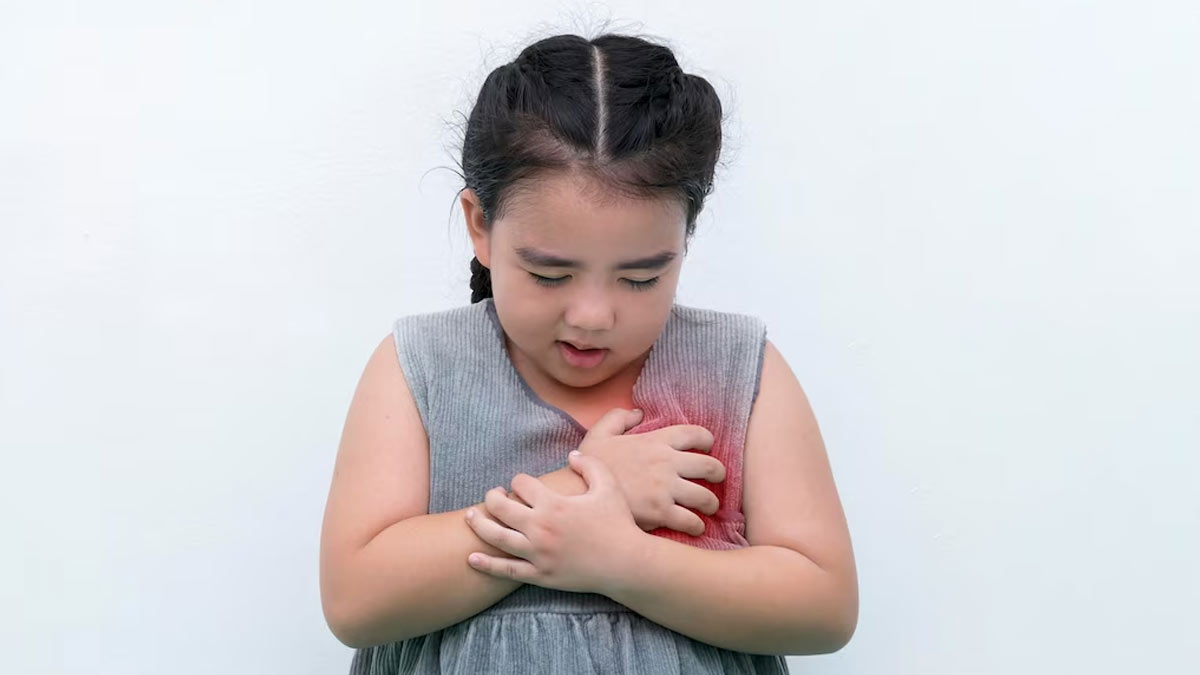
In a heart-wrenching incident in Amroha, a five-year-old girl named Kamini succumbed to a condition that no one could ever think of in their wildest dreams. The child tragically passed away due to a suspected 'heart attack' while innocently watching cartoons on her mother's mobile phone. The sudden and mind-boggling nature of such an event raises a profound question of whether children can experience heart attacks.
Table of Content:-
Can Children Experience Heart Attacks?
According to Dr. Sandeep Gore, Department of Emergency Medicine, Fortis Hospital, Mulund, although extremely rare, children can indeed suffer from heart attacks, particularly if they have congenital or acquired heart diseases or have experienced chest trauma. Let's delve into the potential causes behind such a distressing phenomenon:

Congenital Heart Disease: A Silent Threat
Congenital heart disease encompasses a range of birth-related heart conditions, affecting approximately 1% of live births. Some children, with a history of specific congenital heart defects, face an elevated risk of experiencing a heart attack due to the blockage of a coronary artery.
An example of such a congenital heart defect is the anomalous origin of the left coronary artery, a rare occurrence constituting less than 1% of all congenital heart defects in children. In this condition, the left coronary artery connects to the pulmonary artery instead of the aorta, leading to insufficient blood supply to the heart.
Also Read: Heart Attack Deaths 40% Up in Under-30 Post Covid: Here’s What Can Be The Reason
Acquired Heart Diseases: Unfolding After Birth
Acquired heart diseases develop after birth and can manifest in various forms:
Rheumatic Heart Disease: A Lingering Threat
Rheumatic heart disease, a common type of acquired heart condition, affected 33.4 million people in 2015. Stemming from untreated strep throat, rheumatic fever can result in long-term heart damage, weakening the valves between the heart chambers.
Kawasaki Disease: An Acute Challenge
Kawasaki disease, impacting 9–20 in every 100,000 children under five in the United States, involves acute inflammation of the coronary arteries. This condition can lead to coronary artery aneurysms, potentially causing a myocardial infarction (heart attack). Recognizable by sudden fever, rash, eye irritation, and swelling, Kawasaki disease demands prompt attention.
Other Acquired Heart Conditions: Myocarditis and Pericarditis
Myocarditis, an inflammation of the heart muscle, and pericarditis, inflammation of the sac holding the heart, are additional acquired heart conditions in children. While rare, they contribute to the complex landscape of potential risks.
Chest Trauma: Uncommon Yet Considerable
Blunt chest trauma resulting from accidents or injuries is identified as a rare cause of heart attacks in children. Research acknowledges this as a potential trigger, highlighting the need for vigilance in the aftermath of accidents.
Bottomline
The tragic loss of Kamini in Amroha underscores the importance of understanding the unthinkable — that children, though rarely, can face heart-related challenges. Acknowledging potential causes, from congenital heart diseases to acquired conditions, empowers parents, caregivers, and healthcare professionals to remain vigilant.
As we grapple with the sorrowful incident in Amroha, the broader conversation must extend to awareness, education, and preventive measures. While heart attacks in children remain statistically uncommon, their existence emphasizes the need for a comprehensive approach to pediatric heart health. Through knowledge and proactive healthcare measures, we can collectively strive to protect the precious hearts of our youngest community members.
Also watch this video
How we keep this article up to date:
We work with experts and keep a close eye on the latest in health and wellness. Whenever there is a new research or helpful information, we update our articles with accurate and useful advice.
Current Version